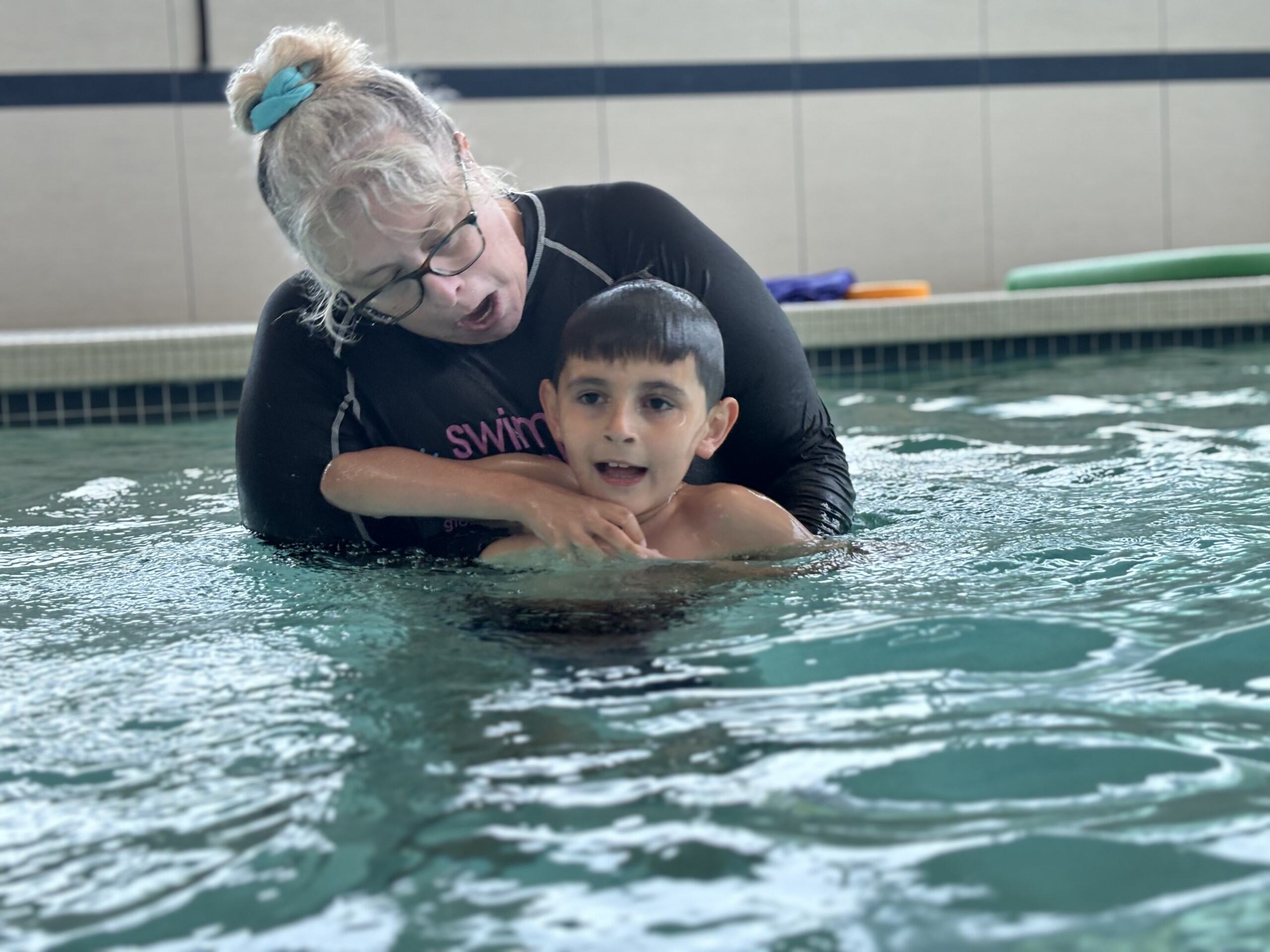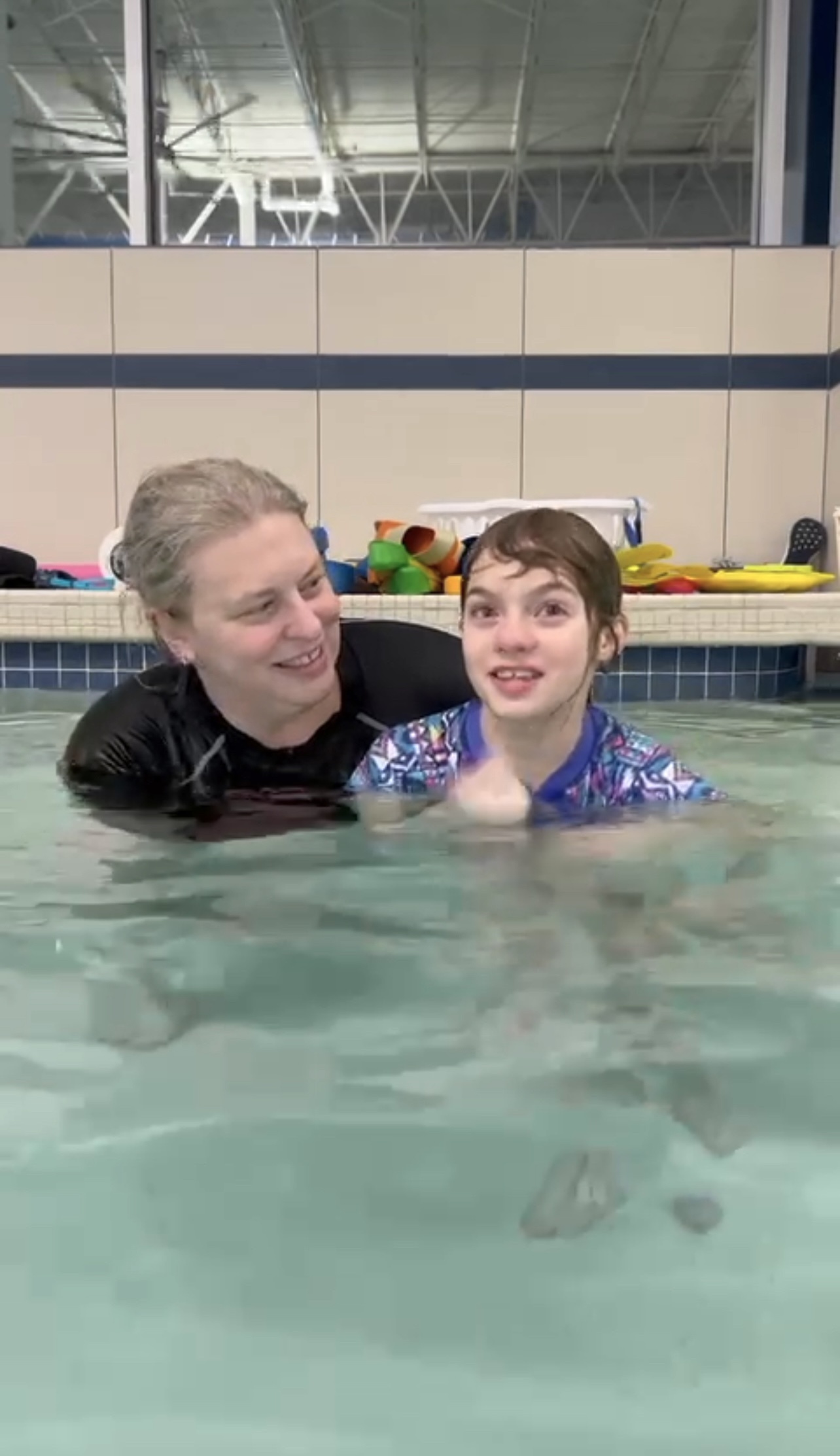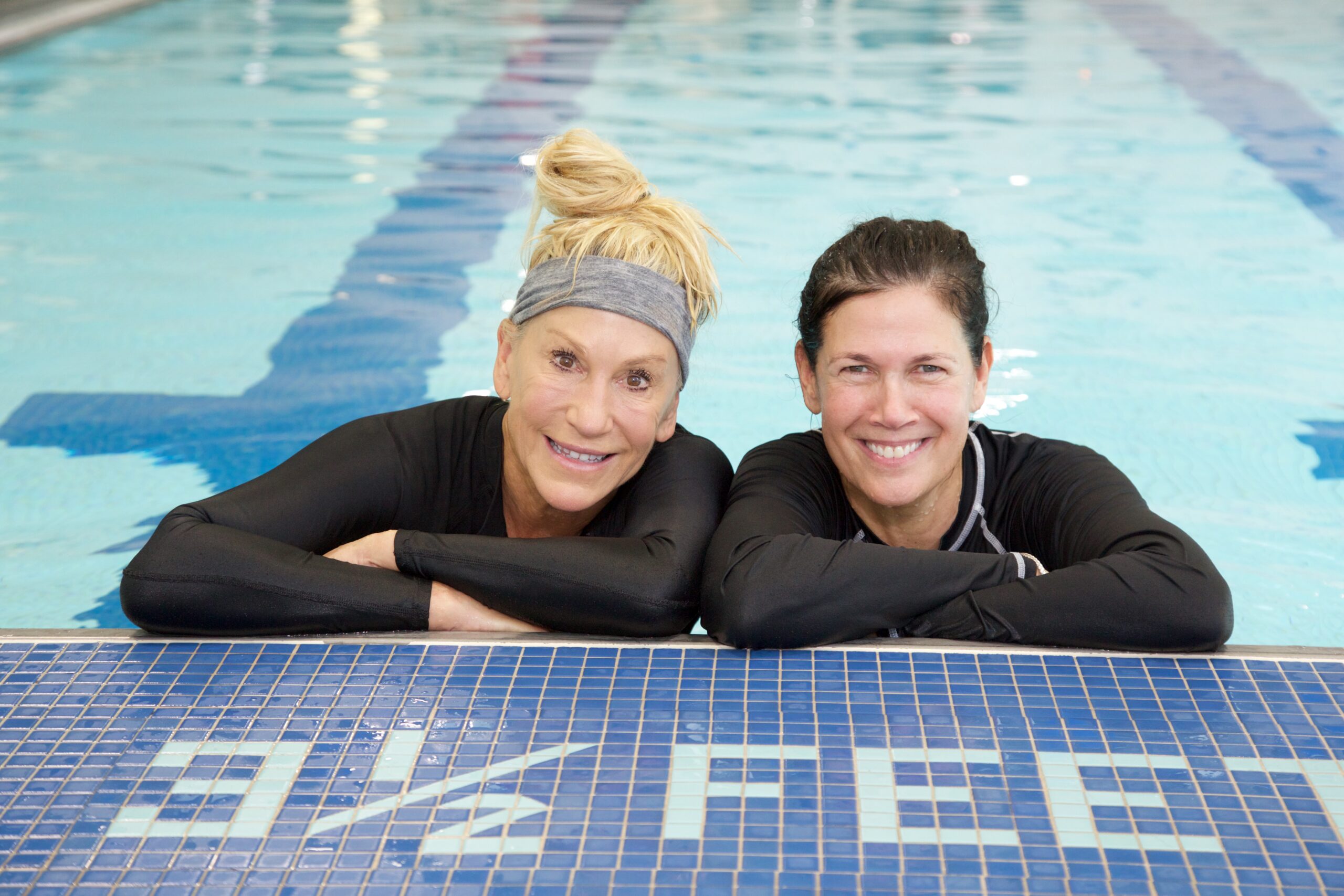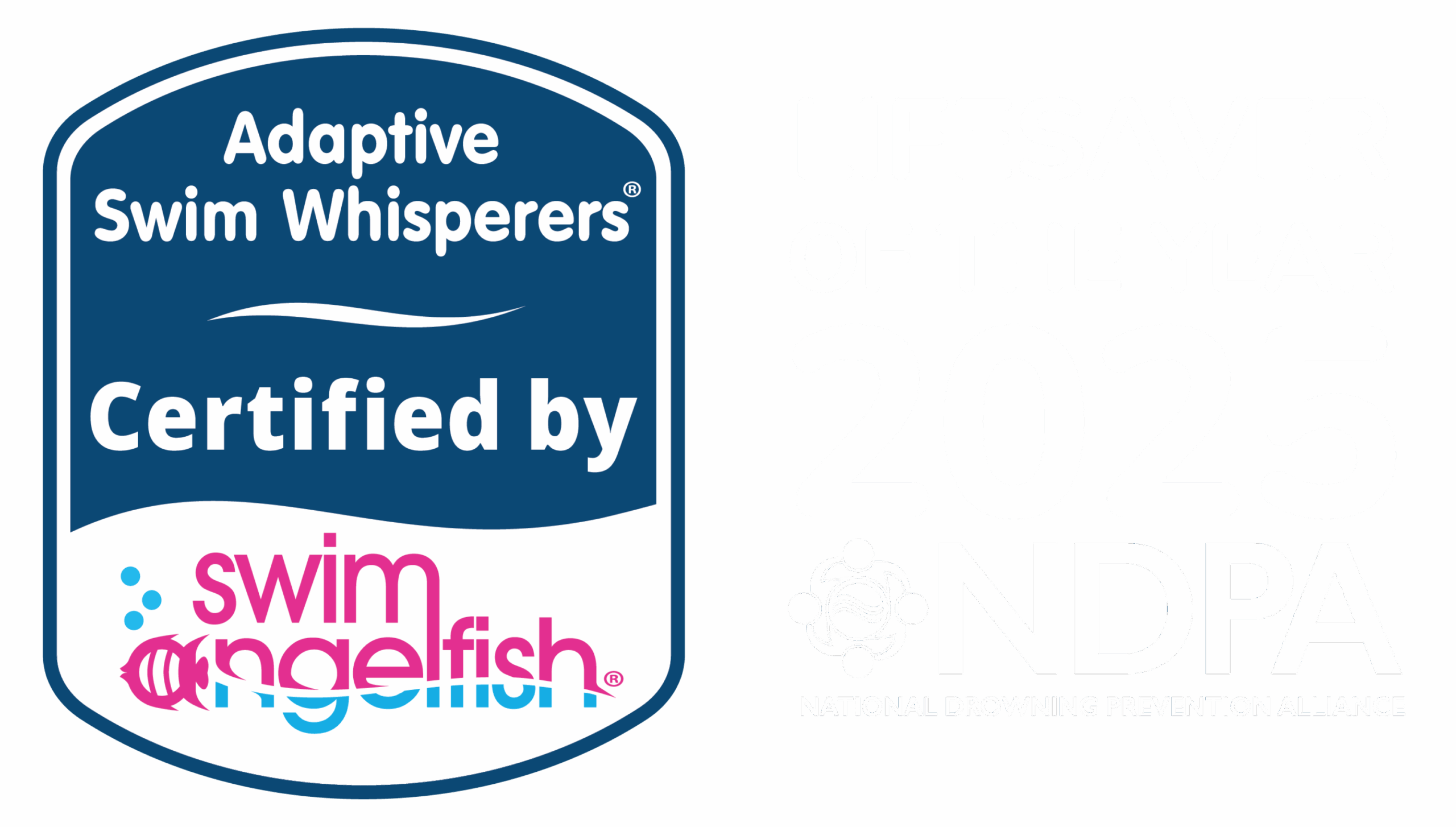Successful Submerging: A Guide for Adaptive Swim Instructors

Submerging is a crucial milestone in swimming, but it can be particularly challenging for children with special needs. Many adaptive swim instructors encounter this roadblock in their practice. In this blog post, we’ll explore the Swim Whisperers® inclusive strategies to help students with special needs overcome their fear of submerging and achieve this important swimming skill.
Why Kids Fear Submerging: Common Reasons
Understanding the reasons behind a child’s fear of submerging or why they don’t like water on their face, can help adaptive swim instructors tailor their approach to address these concerns.
Here are some common reasons why children may resist submerging:

By recognizing these common reasons for fear of submerging, adaptive swim instructors can develop strategies to address these concerns and create a positive learning environment for their students.
The Importance of Submerging for Drowning Prevention and Rescue
The ability to submerge is a vital water safety skill that can significantly reduce the risk of drowning and aid in rescue efforts.
Here’s why:
Successful submerging will improve the chances of a safe rescue as the swimmer has been familiarized with the feeling of going under and will be more comfortable holding their breath.
Learning this skill is an essential component of water safety education and should be emphasized in swim lessons, particularly for children and individuals with special needs.
The Swim Whisperers® Method: A Proven Approach
The Swim Whisperers® method has gained recognition for its effectiveness in teaching swimming to children with special needs. This approach emphasizes a gradual progression, building trust, and creating a positive learning environment.
When applied to submerging, the Swim Whisperers® method involves the following key elements:

By understanding the underlying reasons for fear of submerging and employing the effective strategies of the Swim Whisperers® method, adaptive swim instructors can empower children with special needs to overcome this crucial milestone.
Through patience, positive reinforcement, and a personalized approach, these instructors can help their students develop the essential water safety skill of submerging while building confidence and fostering a lifelong love of swimming.
Want to learn more about the Adaptive Swim Whisperers® Training?
You can advance your swim instructor skills today! When you get certified through the Swim Whisperers® Adaptive Aquatics Training Program, you will have access to proven and time-tested course material, strategies and techniques that will help to make life-changing differences in your swim lessons.



